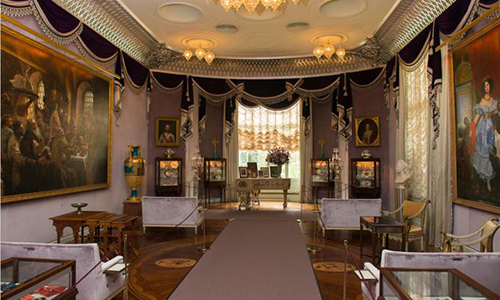How do you best your objects?
When your objects create awe-inspiring moment after awe-inspiring moment, how do you even compete? And, more importantly, do you even want to compete?
The answer to that important question is different for every institution.
At the National Zoological park, animals compete with the desired story lines.
At the Panda House, one wall provides a look into the life of a majestic, adorable, fascinating, and entertaining creature, and the opposite wall is filled with learning. Which wall would you choose to look at during your visit?
The audience is given a choice, but with a very clear answer. The competition will always be won by the creature instead of the learning experience.
There is, however, no loser if there is no competition.
There were very few opportunities to learn when looking at the pandas, unless someone was talking at you while viewing the habitat. There were also absolutely no opportunities to view the animals when learning. On the panda side, there were railings, empty space, and wall below, above, and to the sides of the glass that have huge potential for didactic or media based story telling without interrupting the viewing area, rather than simply being unused barriers to the glass.
On the learning side, there was text, interactives, and photographs, but absolutely no way to see the animal without turning your back on learning. The Zoo offers webcam feeds of a few of its animals, with the Giant Panda being one of those viewing options. Incorporating that live feed within the learning area ensures that the visitors never lose the opportunity to see the animal while taking a chance on learning something. Imagine the interactive wall at NASM meets Giant Panda webcam with interactive facts, videos, and the potential to even see a panda that is out of view from the glass, but perfectly in view of one of the cameras.
If there is learning and animals on both sides, there is no longer a choice to be made by the visitor, and no competition to enter. At the Zoo, the answer to our question is no, you shouldn’t compete, and thankfully the Zoo doesn’t seem to be trying to compete.
At the Hillwood Estate & Gardens, story lines competed with an overabundance of visual wonders. The sheer number of objects in the mansion overwhelmingly tell the story of a fascinating and influential protector, promoter, and collector of the arts and culture.
However, even though the objects identify a part of Marjorie Merriweather Post, grounding her as a collector, without the stories found within the orientation video, audio tours, stationed docents, or handouts, the story of an inspiring woman is lost within the hundreds (if not thousands) of objects on display.
The Estate already has barriers in place to separate the visitor from a variety of pieces within most rooms. Turning these barriers from rope and stanchions to barriers of knowledge with text and other visual or audio aids could create a closer connection with the objects and the room even if it does put them farther away.

Hillwood Estate’s Pavilion Room
In this case, our question is answered with a yes, you should compete, and that is exactly what the Hillwood Estate is doing.
Giant Panda Cam. (2017, February 21). Retrieved March 24, 2017, from https://nationalzoo.si.edu/webcams/panda-cam
Pavilion. (n.d.). Retrieved March 24, 2017, from http://www.hillwoodmuseum.org/about-hillwood/mansion/pavilion
Maksel, R. (n.d.). Happy 40th Birthday, National Air and Space Museum! Retrieved March 24, 2017, from http://www.airspacemag.com/daily-planet/happy-birthday-national-air-and-space-museum-180959588/